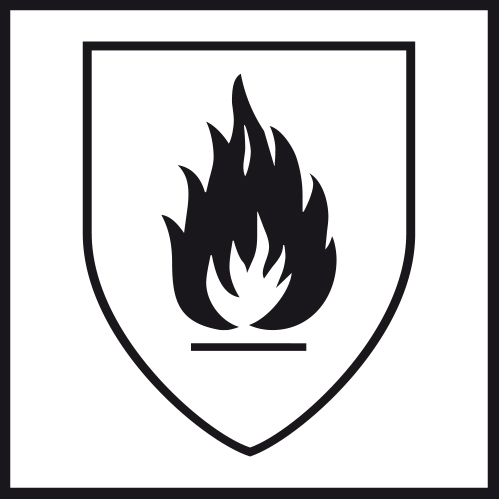

EN ISO 11612:2015 - Protective clothing - Clothing for protection against heat and flames
Standard for protective clothing to protect the user in the event of accidental contact with heat and flame. The standard is relevant to industrial workers and electricians.
Design requirements
Boiler suit or jacket and trousers must cover the body, neck, arms and legs. There must be a 20 cm overlap between jacket and trousers in all working positions. Metal parts must not come into direct contact with the user's skin. Additional design requirements apply to code letters D and E.
Requirements for textiles
Code letter A1 – Surface ignition, ISO 15025 procedure A
- The top or side edge must not ignite during testing.
- Hole formation must not occur during testing.
- Sample must not emit molten or burning droplets.
- Average value for after-flame time must be ≤ 2 seconds.
- The average value for afterglow time must be ≤ 2 seconds.
Code letter A2 – Edge ignition, ISO 15025 procedure B
- The top or side edge must not ignite during testing.
- Sample must not emit molten or burning droplets.
- Average value for after-flame time must be ≤ 2 seconds.
- The average value for afterglow time must be ≤ 2 seconds.
Code letter B – Heat transfer, ISO 9151
Heat transfer is the heat that passes through the garment upon flame contact. Even if the outer layer does not catch fire, the user may still be exposed to injury because heat is produced when textiles, and indirectly the body, come into contact with flame.
Performance levels: Heat transfer measured in seconds
Min. Max.
- B1 4 < 10
- B2 10 < 20
- B3 20
Low heat radiation over a long period of time can result in a risk of injury.
Performance levels: Radiant heat measured in seconds.
Min. Max.
- C1 7 < 20
- C2 20 < 50
- C3 50 < 95
- C4 95
Code letter D - Molten aluminum spatter, ISO 9185
Even if the textile does not burn and disintegrate in contact with molten metal, burn injuries can still occur. The test gives an indication of how much metal spatter the garment can withstand before it loses its protective ability, code letter D defines levels for molten aluminum and code letter E levels for molten iron.
Performance levels: Molten aluminum measured in grams.
Min. Max
- D1 100 < 200
- D2 200 < 350
- D3 350
Code letter E - Molten iron spatter, ISO 9185
Performance levels: Molten iron measured in grams
Min. Max
- E1 60 < 120
- E2 120 < 200
- E3 200
Code letter F – Contact heat, ISO 12127
The garment's protection against the transfer of contact heat has been tested at a temperature of 250°C in accordance with ISO 12127.
Performance levels: Contact heat transfer measured in seconds
Min. Max
- F1 5 < 10
- F2 10 < 15
- F3 15
User information
Two-piece protective clothing must be used together to achieve the specified level of protection. The CE label in the garment provides information on the required garment combination. The CE label also provides information about which code letters the garment is certified according to. If spatter from chemicals or flammable liquids accidentally end up on the clothing, the user should immediately move from the area and carefully remove the clothing. Make sure that chemicals or liquids do not come into contact with skin. The garments must then be cleaned or discarded.
